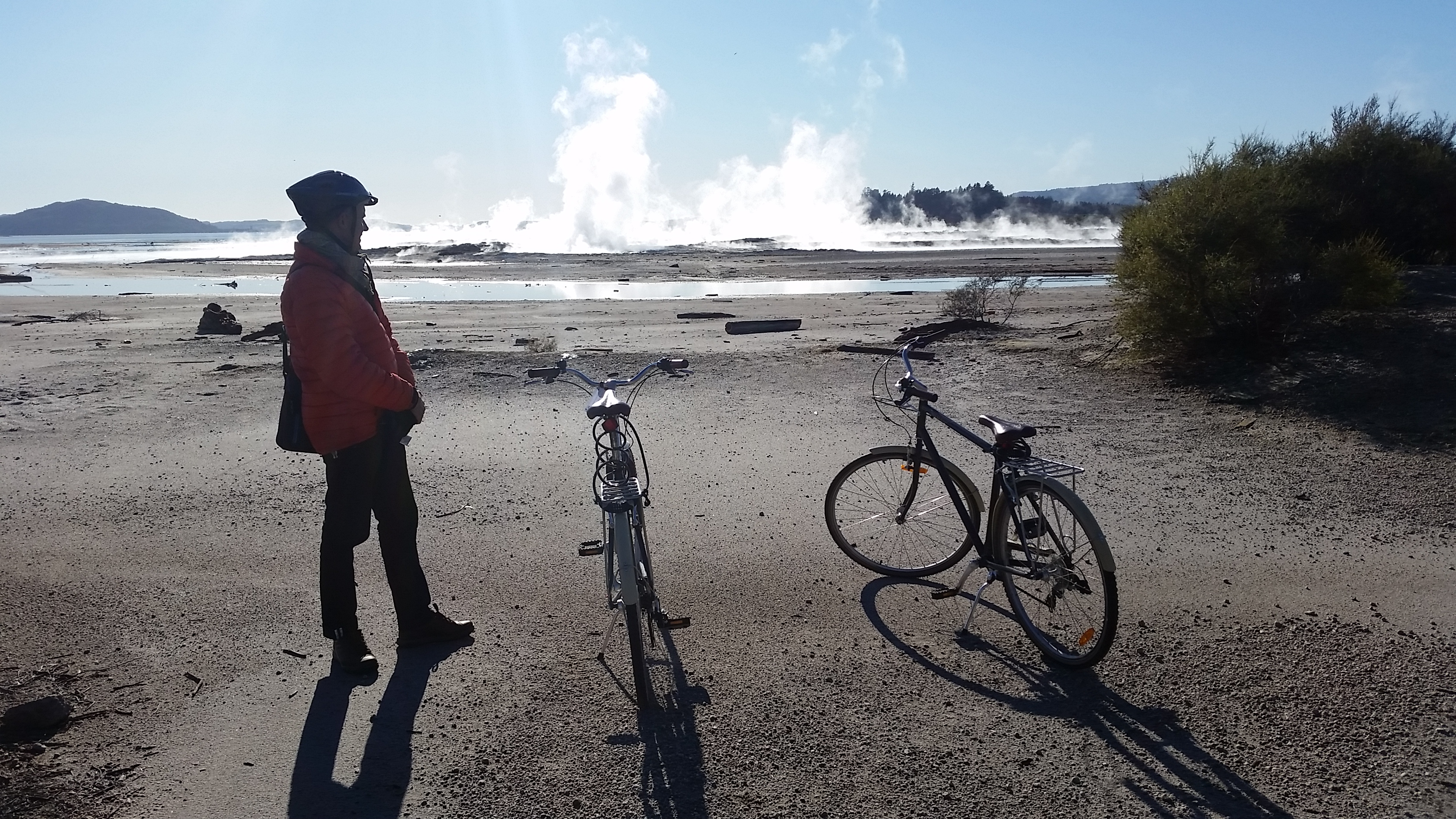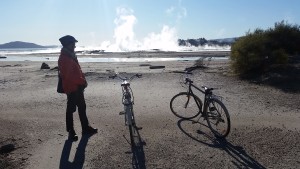When people on bikes share the road with heavy vehicles, the stakes are high. So much depends on everyone being a little nicer to each other, which starts with simply learning to see each other – and leaning to see what each other can see. For several years, CAN (the Cycling Advocates’ Network) has been running hands-on workshops that give cyclists and truck (or bus) drivers a chance to travel a mile in each other’s shoes.
Richard Barter, CAN Project Manager, reports in from a recent Road User workshop in Rotorua:
Road User workshops that improve the safety of cyclists around heavy vehicles are all about getting cyclists into trucks and drivers out on bicycles. But before that happens we need to know the route is safe. At a recent workshop in Rotorua, the early morning sun was shining through the steam rising off the water when we set off on the road around the lake edge to do just that. Being the ride leader for the day, it was suggested to me that “We won’t go there now, but take that path down to the lakeside when we do the ride, it looks like it will join the road further up”. Hmm I thought, I hope so…
With the route sorted it was back to the Rotorua Lakes Council offices to meet the participants from the logging, bus, freight sectors and reps from local cycling groups. After introductions we kitted them out with bikes. Without fail, blokes who have not cycled for more than a few years turn into young larrikins when in the saddle again. Being made to ride in and out of some cones soon settled them down. The real reason for doing this is to ensure they can cope out on the road.
I took them down that aforementioned path towards the lakeside. It forked, so I went along the scenic option closest to the lake, following some bicycle tyre tracks…
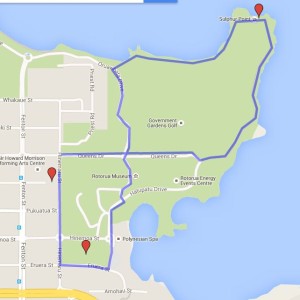
The first exercise of the workshop is to figure out how safe is a safe following distance. The cyclists and drivers buddied up and followed each other walking in a circle at various distances. What felt “right” was measured. This was repeated cycling, the distance more than doubled. Finally a smallish woman on foot was followed by a largish man on a bike, the distance doubled again. As size, mass and speed increased, so did what felt to be a “safe” following distance. By the way, the 2 second following rule becomes at least 4 seconds with a heavy vehicle, some driver trainers I know would say 7 seconds.
Next we noted the distance the riders had positioned themselves out from parked cars and the curb. They saw just how far out a car door can open, how a bicycle wheel can neatly drop into a drainage grate, and the prevalence of debris and broken glass on the side of the road. It didn’t take long for them to realise this is why cyclists often ride out in the traffic lane: doing this they don’t have to swerve to avoid things, they can be seen, be predictable and move faster.
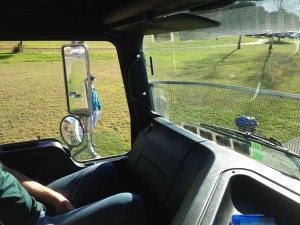
The finale involved a huge logging truck passing the group who were lined up facing down the road beside their bikes. Chalk marks on the road enabled us to measure just how close it was. Even though I’ve experienced this twice before, I was still rattled when the truck went past a metre away. The unanimous call was for at least 1.5 metres please.
By now, the earlier somewhat frosty interaction between the truckers and cyclists had developed into warm nonstop conversations that were only subdued when the cyclists all had a turn getting in the driver’s seat of the logging truck. I won’t recount the words they used to describe the experience, but they sure won’t ride up the inside of a truck again, now that they know they won’t be seen.
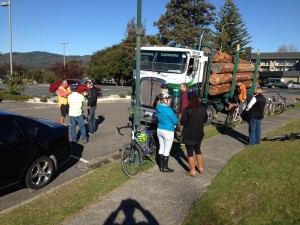
The biggest challenge we had was getting them all out the door after lunch when the workshop was finished, as they just wanted to keep talking.
Oh yes, the path by the lake…? Well, after taking that last fork, nek minnit the path disappeared and we suddenly found ourselves in the middle of a live bubbling thermal area. What to do? Turning the 14 trusting riders around looked like it would be a mission. So we dismounted, and carried on, gingerly following tyre tracks through a wee steaming stream and some dense bush to soon emerge on the road.
Moral of the story, when ground testing a route, don’t take short cuts!
– Richard Barter, CAN Project Manager
For more info about the Safer Journeys Road User Workshops contact richard@can.org.nz or go to can.org/ruw
This cheery video from 2012 gives a flavour of the workshops. Good to see the bus drivers remembering how much they love riding bikes, too:
https://www.youtube.com/watch?v=ZpNJUSIHp3g

